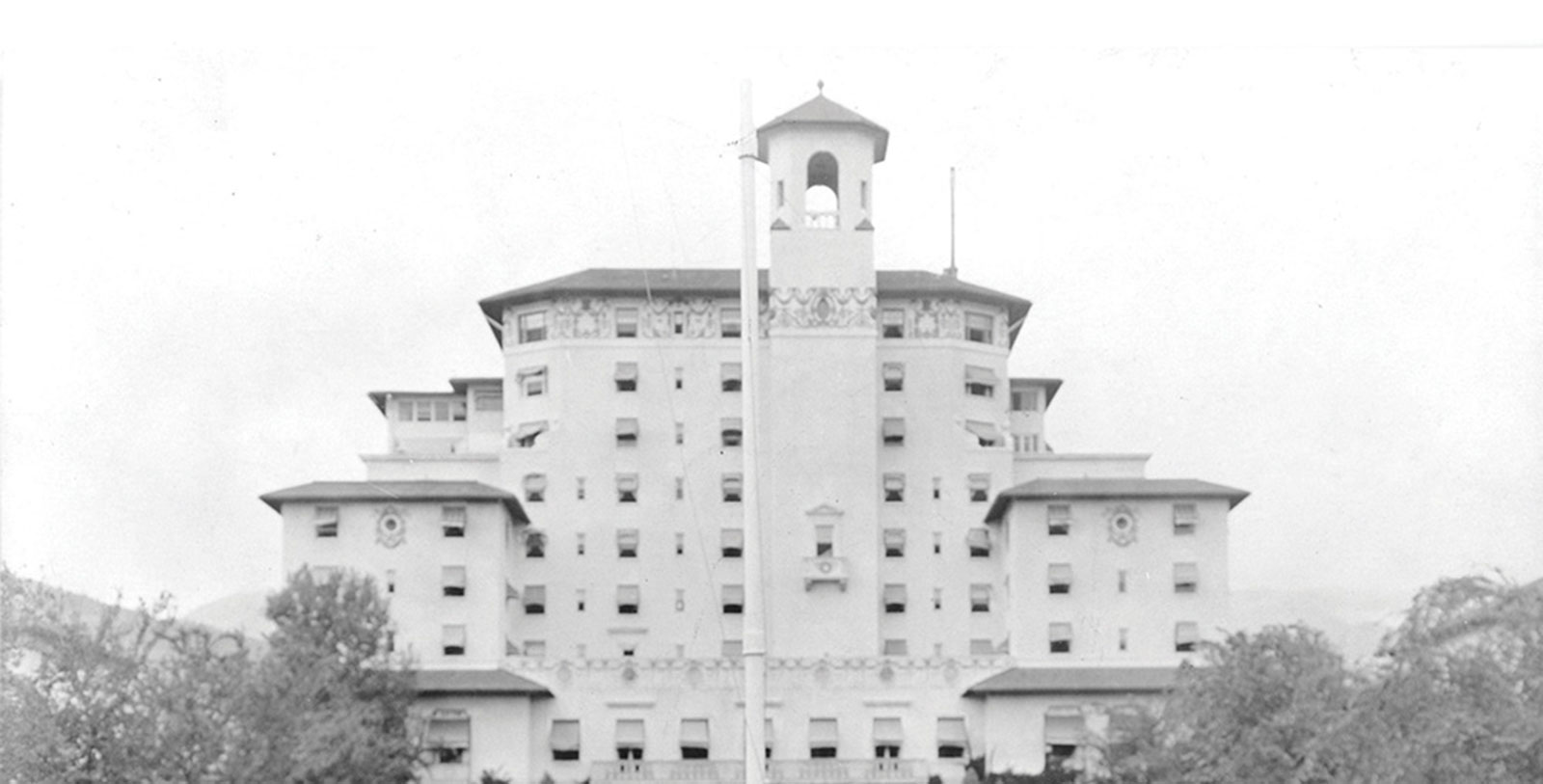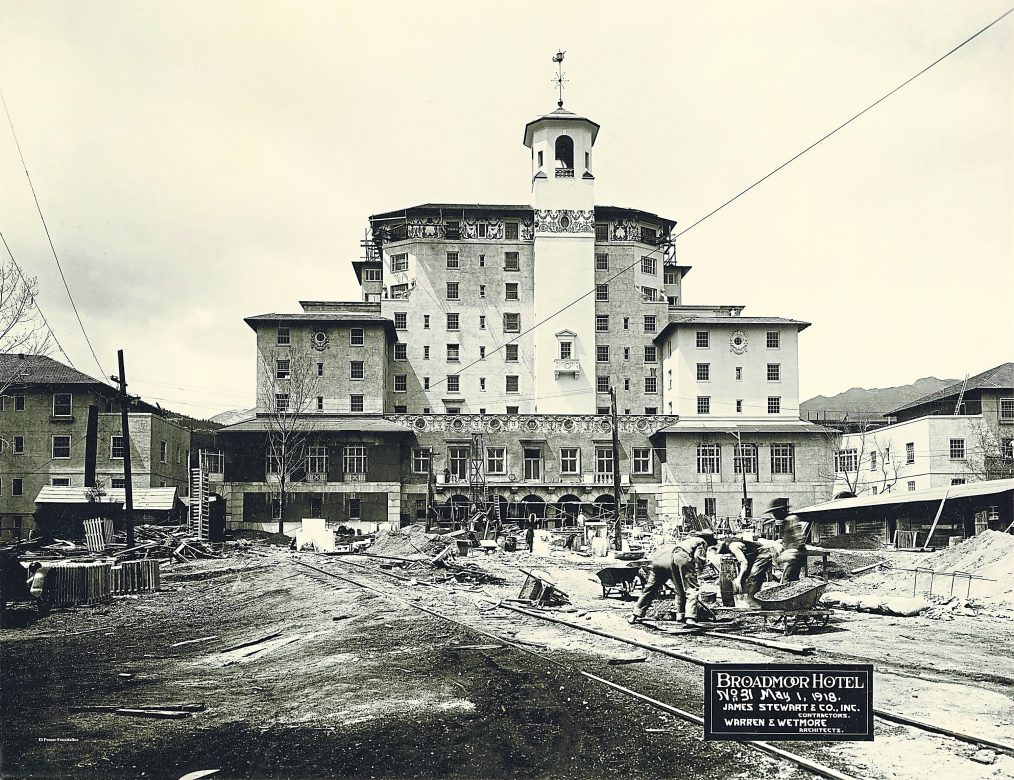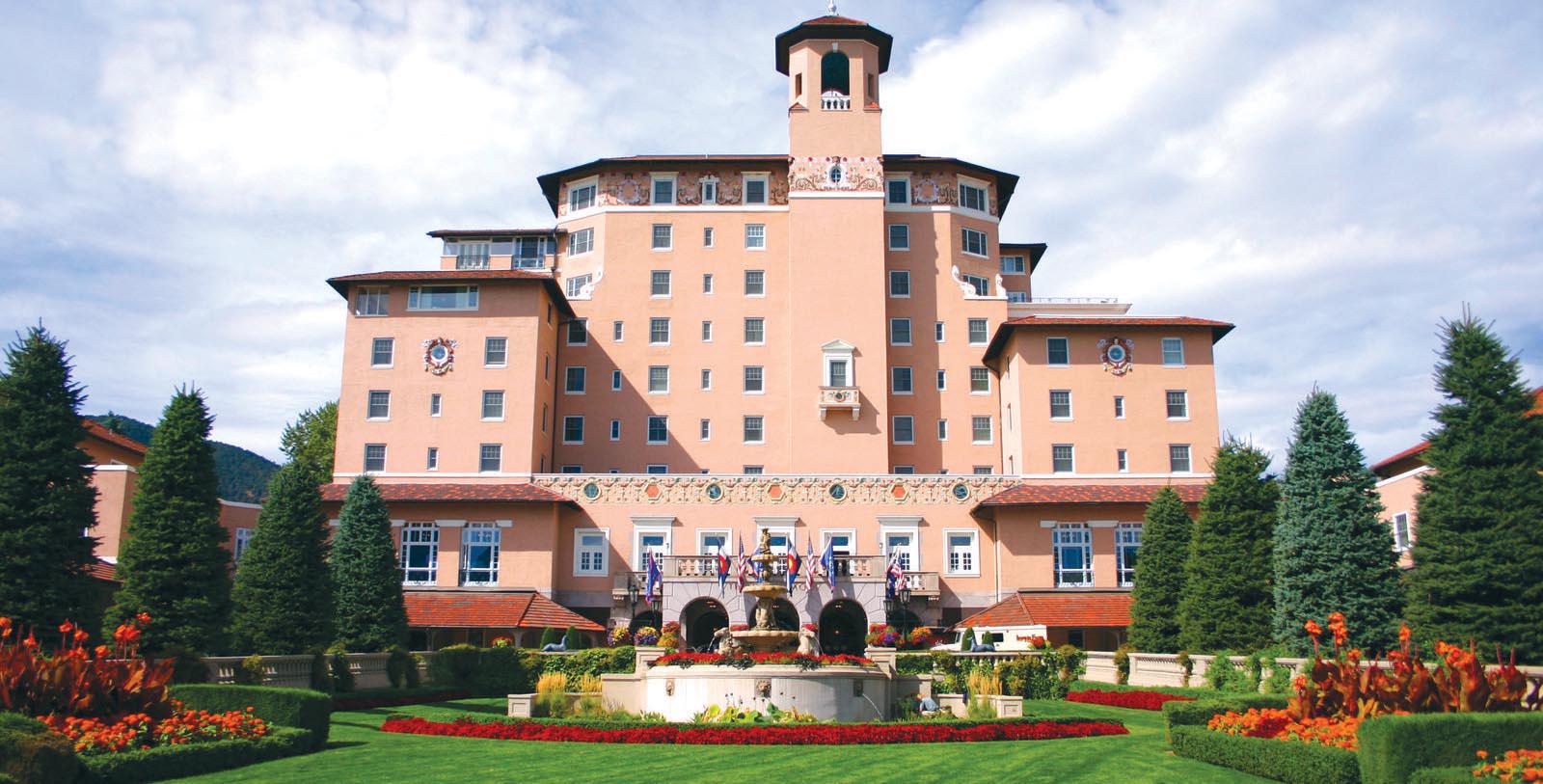Receive for Free - Discover & Explore eNewsletter monthly with advance notice of special offers, packages, and insider savings from 10% - 30% off Best Available Rates at selected hotels.
history
Discover The Broadmoor, which offers exceptional accommodations among the mountains of Colorado Springs, Colorado.
The Broadmoor, a charter member of Historic Hotels of America since 1989, dates back to 1918.
VIEW TIMELINEHistory of the Broadmoor
A Colorado Springs resort steeped in history spanning almost a hundred years, The Broadmoor is rich in tradition and culture. Unique in all the west, this award winning, 5 star hotel is unrivaled in the world for food, drink and adventure and has an unprecedented European flair. Come be part of the living breathing history in this Colorado Springs luxury hotel, The Broadmoor.
WATCH NOWThe Broadmoor was constructed during the international conflict of 1914 to 1918, where the Central Powers battled the Entente for global dominance. In 1880, tuberculosis patient Willie Wilcox came west seeking his fortune and hoping to find a cure for his illness. He bought the land at the base of Cheyenne Mountain and established a small dairy farm, but his inexperience with animals became his undoing. Wilcox formed a partnership with a Prussian Count named James Pourtales, who had also come west to seek romance and fortune. Pourtales had grand designs and decided the only way to make a truly decent profit was to create an upper-class suburb of Colorado Springs with numerous amenities. As such, The Broadmoor Land and Investment Company was born in 1890. To entice buyers, Pourtales built the original Broadmoor Casino and Cheyenne Lake. After going bankrupt when the casino burned down, Pourtales sold the land to a group of investors who built a second casino and a small hotel. Plagued with similar problems, the second casino and the hotel went into receivership. Purchased by a prominent Colorado Springs investor, the hotel and casino became The Broadmoor School for Girls, a private boarding school.
On May 9, 1916, Spencer Penrose, a Philadelphia entrepreneur who had made his fortune in mining, purchased the casino, hotel, and an adjoining 450 acres. His dream was to turn the Pikes Peak region into the most interesting, multi-faceted resort area that could be imagined. The New York firm of Warren and Wetmore designed the structure and construction began on May 20, 1917. Skilled artisans were brought from Europe to create The Broadmoor's elaborate moldings, embellishments, and paintings. To further enhance its renown, Penrose also hired famed Scottish golf architect Donald Ross to create the hotel’s 18-hole golf course. When the project finally concluded in 1918, Penrose and his fellow investors had spent more than two million dollars (which is the equivalent to $34 million today). It was nevertheless received as one of the best resorts in the entire United States. Penrose threw a magnificent extravaganza to commemorate The Broadmoor’s grand opening, starting a legacy of world-class hospitality that was to last for more than a century. Within a matter of years, all sorts of prestigious Americans would stay at The Broadmoor at one point or another, including John D. Rockefeller, Charles Lindbergh, and Clark Gable. It even hosted numerous U.S. Presidents, such as Herbert Hoover and Franklin Delano Roosevelt.
When Penrose passed away in 1939, his charitable organization, El Pomar Foundation, assumed control over The Broadmoor. The organization subsequently appointed Charles L. Tutt Jr. of the Broadmoor Hotel and Land Company as the resort’s president. Under the stewardship of Tutt—and his sons William and Russell—The Broadmoor grew exponentially. Several new facilities emerged on site, including the luxurious Broadmoor South and the International Center. They oversaw the design of two additional golf courses as well, including one developed by the legendary Arnold Palmer. In spite of this success, El Pomar Foundation eventually sold The Broadmoor to The Oklahoma Publishing Company in 1988. Now owned by the Anschutz family, The Broadmoor today continues to be one of the nation’s most prestigious historic destinations.
-
About the Location +
The Broadmoor resides within the Broadmoor neighborhood, which in turn lies within the city limits of Colorado Springs. Affiliated with Colorado Springs as far back as the late 19th century, this bucolic district was only recently annexed by the city in 1980. Yet, the Broadmoor neighborhood is still a part of the rich heritage that defines the Old American West. Colorado Springs itself dates back to 1886 when William Jackson Palmer of the Colorado Springs Company founded the settlement as part of a much larger strategy to establish communities that would service his future railroads in the area. The city spent the first year of its existence as the “Fountain Colony” before changing its name permanently to “Colorado Springs.” The Broadmoor neighborhood emerged around this time, when developers working of the Broadmoor Land Company constructed the suburb for those working in the adjacent settlement. Mining and railroad companies dominated the local economy for decades until the mid-20th century when several military commands—including the North American Aerospace Defense Command (NORAD)—moved to the area. Many wonderful outdoor geographic locations surround both the Broadmoor neighborhood and Colorado Springs as a whole, with the northern spur of Cheyenne Mountain located close to the resort.
-
About the Architecture +
Modeling his fledgling resort after the great alpine hotels of 19th-century Europe, Spencer Penrose had always intended for The Broadmoor to be the unrivaled “Grand Dame of the Rockies.” Enlisting the help of two investors, Albert E. Carlton and C.M. MacNeill, he spared no expense in The Broadmoor’s development. Penrose hired the architectural firm Warren and Wetmore to oversee the design, which had risen to prominence for its prior work with the Ritz-Carlton and Bowman-Biltmore hotel chains. He also recruited the renowned landscape architect, Frederick Law Olmstead Jr., to create the layout of the grounds, and charged Donald Ross to craft The Broadmoor’s first golf course. Priceless pieces of furniture and artwork were imported directly from both Europe and Asia, while facilities for the first ever full-service spa emerged amid the construction. Penrose even transported a dismantled pub from England and reassembled it as a dining option inside The Broadmoor.
When the project finally concluded in 1918, Penrose and his fellow investors had spent more than two million dollars (which is the equivalent to $34 million today). It was nevertheless received as one of the best resorts in the entire United States. Many marveled at its brilliant architectural design, which borrowed heavily from the aesthetics of the Italian Renaissance. Warren and Wetmore crafted an incredibly iconic exterior of pink stucco that enabled The Broadmoor to blend in seamlessly with the surrounding mountains of Pikes Peak. Inside, guests encountered a wealth of beautiful architectural features, including the gorgeous ceiling over the main lobby’s mezzanine. Designed by Giovanni Smeraldi and a team of 100 Italian artists, the structure displays two masterfully painted images of dancing cherubs.
Construction to The Broadmoor did not cease after its initial opening though. On the contrary, Penrose continued to grow the resort well after its grand debut. He oversaw the construction of a large polo field in 1928, as well as the Broadmoor Riding Arena across from the main building two years later. Penrose also initiated the development of the Broadmoor Ice Palace in 1938, which hosted several U.S. Figure Skating Championships throughout the mid-20th century. Yet, the work on The Broadmoor continued well after Penrose’s death in 1939. Thanks in large part to his widow, Julie, as well as the family charitable organization, El Pomar Foundation, the resort continued to grow. Together, they established the Carriage House Museum to honor Spencer Penrose’s legacy. Additional facilities were added throughout the 1950s and 1960s, including the creation of Broadmoor South and the International Center. More recently, The Broadmoor has seen the addition of many new structures, including the Broadmoor Golf and Tennis Club, the Broadmoor Golf Club, and most notably, Broadmoor West.
Over the years, The Broadmoor’s magnificent landscape architecture has come to be just as iconic as its structural architecture. Originally designed by Fredrick Law Olmstead Jr., the resorts gardens currently cover some 35 acres. The landscaping and flowering gardens encourage guests to experience several different types of landscape, and the original European theme throughout the resort. As guests drive up the entrance to the main hotel, they view a formal garden with the hedged boxwoods and junipers and a water feature with water lilies blooming on top of the water surrounding the 10 acre lake. In the spring time, over 18,000 daffodils and 25,000 pansies are planted. In the summer there are over 35,000 annual and 12,000 plants scattered in pots and hanging baskets around the resort.
-
Famous Historic Events +
The Broadmoor has accommodated its fair share of international sporting competitions throughout its history. Dozens of U.S. Women’s Open and U.S. Senior Open golf tournaments have happened at the resort ever since they both started. It has also served as the venue for several U.S. National Figure Skating Championships from 1948 to 1973. It was even the host for the World Figure Skating Championship in 1965, in which Alain Calmat of France won the Men’s Gold; Petra Burka of Canada won the Ladies’ Gold; Liudmila Belousova and Oleg Protopopov of the Soviet Union won the Pairs’ Gold; and Eva Romanová and Pavel Roman of Czechoslovakia won the Gold in Ice Dance. Several Americans do receive Silver medals in the following categories: Scott Allen in the Men’s competition, as well as Vivian Joseph and Ronald Joseph in the Pairs competition.
The resort was also the meeting place for a North Atlantic Treaty Organization (NATO) summit back in 2003. Then President George W. Bush and his Secretary of Defense, Donald Rumsfeld, met with allies from seven European countries at The Broadmoor to discuss the nature of their alliances through the NATO agreement. NATO is a multinational alliance of nations in North America and Europe, which seek to defend one another in the event of an attack. This historic relationship formed in the wake of World War II, when several nations—led by the United States—signed the North Atlantic Treaty in 1949. Many Western nations at the time worried that the Cold War with the Soviet Union could become “hot” and sought out each other’s mutual protection.
-
Famous Historic Guests +
John D. Rockefeller, founder of Standard Oil Company
Charles Lindbergh, historic aviator and military officer
Clark Gable, actor known for his roles in It Happened One Night, Mutiny on the Bounty, Gone with the Wind.
John Wayne, actor known for his roles in The Man Who Shot Liberty Vance, True Grit, and The Longest Day.
Maurice Chevalier, actor known for his roles in The Love Paradise and The Smiling Lieutenant.
Bing Crosby, actor, singer, and comedian who many consider to be America’s first multimedia star.
Walt Disney, legendary founder of The Walt Disney Company.
Bob Hope, famed comedian and patron of the United Service Organization (USO).
Jimmy Stewart, actor known for his roles in You Can’t Take It with You and Mr. Smith Goes to Washington.
Jack Benny, famous comedian known for his trademark comic timing.
Jackie Gleason, legendary comedian known for starring in The Jackie Gleason Show.
Joe DiMaggio, celebrated baseball player known as “The Yankee Clipper.”
Stan Musial, franchise icon of the St. Louis Cardinals.
Prime Minister Toshiki Kaifu of Japan (1989 – 1991)
Margaret Thatcher, Prime Minister of the United Kingdom (1979 – 1990)
Herbert Hoover, 31st President of the United States (1929 – 1933)
Franklin D Roosevelt, 32nd President of the United States (1933 – 1945)
Dwight David Eisenhower, 34th President of the United States (1953 – 1961)
John F. Kennedy, 35th President of the United States (1961 – 1963)
Richard M. Nixon, 37th President of the United States (1969 – 1974)
Gerald Ford, 38th President of the United States (1974 – 1977)
Ronald Reagan, 40th President of the United States (1981 – 1988)
George H.W. Bush, 41st President of the United States (1989 – 1993)
George W. Bush, 43rd President of the United States (2001 – 2009)
-
Film, TV and Media Connections +
Ice Castles (1978)
The Case of the Sinister Spirit (1987)
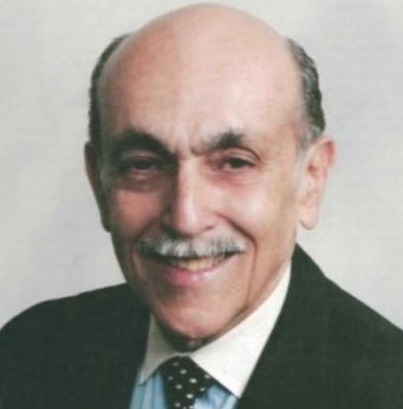
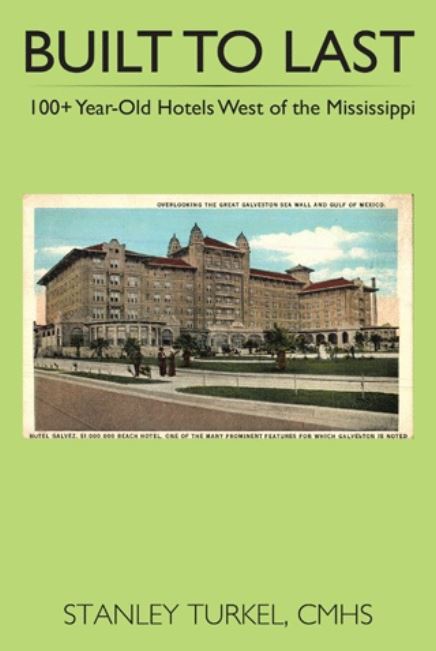
Guest Historian Series
Read Guest Historian SeriesNobody Asked Me, But… No. 196;
Hotel History: The Broadmoor (1918), Colorado Springs, Colorado
By Stanley Turkel, CMHS
For over a century, dreamers, farmers, investors, and even a Prussian Count have held a vision of the magnificence in store for the Colorado Springs area. It took the foresight, dedication and incredible vision of one man, Spencer Penrose, to bring the dream to reality… and to make it wonderful enough to last 100 years.
Even before it was the Broadmoor Dairy Farm, the land at the base of Cheyenne Mountain was a ranch where corn was grown for making brooms. Willie Wilcox, who came to the area seeking his fortune and hoping to find a cure for his tuberculosis, bought the land in 1880 and established a small dairy. Unfortunately, Wilcox’s inexperience with animals soon became evident, and he realized that without significant investments the project would not be a success, so he began negotiations to sell the land.
Prussian Count James Pourtales had also come west to seek romance and fortune, and in 1885 he brought his knowledge of German scientific farming to Colorado Springs, and began a partnership with Wilcox to bring the dairy back to life. Although the dairy was still doing well by 1888, Pourtales realized it would not turn a large enough profit or return on his investment to be of aid to his estates in Prussia. He decided the only way to make a decent profit would be to create an upper-class suburb of Colorado Springs with numerous amenities to increase the value of the home sites. So in 1890, Count Pourtales formed the Broadmoor Land and Investment Company and purchased the original 2,400-acre tract.
To entice people to buy lots, Pourtales built The Broadmoor Casino, which opened July 1, 1891. A small hotel was constructed a few years later. Continually beset by financial problems, Pourtales was unable to move forward with development of the site, and the destination was forced into receivership. In 1897, the casino and its small neighboring hotel was eventually converted into a boarding house and day school for girls.
On May 9, 1916, Spencer Penrose, a Philadelphia entrepreneur who had made his fortune in gold and copper mining, purchased The Broadmoor Casino and Hotel 40-acre site, and an adjoining 400 acres. Penrose devised a new project to turn the Pikes Peak region into the most interesting, multi-faceted resort area that could be conceived and he had the money to do it.
Using the famous New York architectural and design firm Warren and Wetmore, Penrose began construction of the main complex on May 20, 1917. With the objective of creating the most beautiful resort in the world, Spencer Penrose imported artisans from Italy and other European countries to create the ornate moldings and paintings which adorn the interior and exterior of the hotel. Italian Renaissance in style, the original Broadmoor resort was designed with four wings which were completed in June 1918. An 18-hole golf course was designed by the master golf-course architect, Donald Ross.
The resort officially opened on June 29, 1918, newly christened as The Broadmoor with architectural and design features including a spectacular curved marble staircase, dramatic chandeliers, Della Robbia-style tile, hand-painted beams and ceilings, a carved marble fountain, and a striking pink stucco façade.
The genius of Spencer Penrose was not limited to the construction and operation of a world-class resort. He was brilliant in the promotion and marketing of the resort, and the surrounding areas. Penrose correctly assessed the tourist value of Pikes Peak for the growth of The Broadmoor. He built the Pikes Peak Road leading to the summit as an alternative to the Cog Railway and established the Cheyenne Mountain Zoo, which is still considered one of the finest privately-owned zoos in the United States. In 1925, Penrose purchased and modernized the Pikes Peak Cog Railway, which became one of his most enduring legacies.
When The Broadmoor opened in 1918, Penrose charged each and every employee with providing a level of service and overall experience as yet unattainable in the United States. He contracted Italian Executive Chef Louis Stratta and charged him with bringing his inventive and international ideas to America’s west. In the resort’s 100-year history, The Broadmoor has had only six General Managers and four Executive Chefs, a true distinction in the hospitality industry, and a testament to the “quality of life” at the resort.
The Broadmoor’s surge in fame led to an expansion of the resort’s facilities, all created to achieve The Broadmoor’s “grand plan” of top-rated service and uncompromising excellence. Addressing the popularity of golf as an American pastime, The Broadmoor hired famed golf-course architect Robert Trent Jones to design a second golf course; Jones’ nine-hole course was expanded to 18 holes in 1965. A third golf course, designed by Ed Seay and Arnold Palmer was added in 1976.
In 1961, The Broadmoor constructed the International Center, a dedicated meeting space, followed by a new building housing additional guest rooms, and The Penrose Room, a fine-dining restaurant. In 1976, the West Complex was completed, adding another 154 guestrooms and a variety of meeting facilities. Colorado Hall, a second conference facility was constructed in 1982 and the 12,000 square-foot Rocky Mountain Ballroom opened in 1994. In 1995, an additional 150 guestrooms with either lake or mountain views, were added.
Also in 1995, the hotel opened the new Broadmoor Spa, Golf and Tennis Club, that featured a full-service, world-class “amenity spa”. This state-of-the-art fitness center included an exercise room, aerobics studio, indoor swimming pool and outdoor heated lap pool and Jacuzzi, a golf clubhouse, three restaurants and lounges and both golf and tennis pro shops.
The summer of 2001 saw the completion of an 11,000 square foot infinity edge swimming pool that was added to the north end of Cheyenne Lake, along with Slide Mountain waterslides, a children’s pool, two 14-person whirlpools, 13 cabanas and a new pool café. In October 2001, the venerable Broadmoor Main Building closed for the first time in the history of the resort to undergo a major renovation. Each of the original 142 rooms, the lobby, lounges, restaurants, retail outlets and public spaces were redone. The renovation of guestrooms included high-speed Internet access, multiple phone lines, PC data ports and enhancements like large five-fixture bath facilities with soaking tubs, separate showers and plumbing, new sprinkler systems, and other high-tech features.
In May 2002, The Broadmoor unveiled the completion of a $75 million renovation project. The project began with the addition of the Lakeside Suites building, with 21 spacious rooms, most with fireplaces and either patios or balconies.
In October of 2005, The Broadmoor added 60,000 square feet of additional meeting space with the completion of Broadmoor Hall. Located next to the International Center and Colorado Hall, Broadmoor Hall brings the total available conference and meeting space on the destination up to 185,000 square feet. The Carriage Museum was relocated from the south side of the destination and expanded to 8,000 square feet. The museum features historic memorabilia, vintage automobiles and carriages from the Penrose private collection. South Tower has been renovated to include all new guest rooms with luxurious five-fixture baths, fireplaces, balconies and flat screen TV’s in living area and bathrooms and the latest in technological upgrades. In July of 2006, the Mountain Course opened with 18-holes, designed by Nicklaus Design, bringing The Broadmoor up to 54 holes of championship golf courses.
Since its opening, this grand resort has been the destination of presidents, statesmen, foreign dignitaries and celebrities. United States Presidents Hoover, Roosevelt, Eisenhower, Kennedy, Nixon, Ford, Reagan and George H.W. and George W. Bush. Dignitaries include King Hussein of Jordan, Princess Anne, Prime Minister Toshiki Kaifu of Japan, the King of Siam, Margaret Thatcher, and the NATO Ministerial Alliance. The hotel has also attracted many entertainment and sports celebrities throughout its long history including John Wayne, Maurice Chevalier, Bing Crosby, Walt Disney, Charles Lindbergh, Clark Gable, Bob Hope, Jimmy Stewart, Jack Benny, Jackie Gleason, Sir Elton John, Ted Turner, Jane Fonda, Terry Bradshaw, Dorothy Hamill, Peggy Fleming, Michelle Kwan, Joe DiMaggio, Stan Musial, Sugar Ray Leonard, Stephen Tyler and Aerosmith.
The Broadmoor is the longest-running consecutive winner of both the AAA Five-Diamond and the Forbes Travel Guide Five-Star awards. The Broadmoor has received the Five Star rating for a record 56 consecutive years and the Five Diamond rating for 40 years. “The Grande Dame of the Rockies” is a member of Historic Hotels of America, the official program of the National Trust for Historic Preservation.
*****
About Stanley Turkel, CMHS
Stanley Turkel is a recognized consultant in the hotel industry. He operates his hotel consulting practice serving as an expert witness in hotel-related cases and providing asset management an and hotel franchising consultation. Prior to forming his hotel consulting firm, Turkel was the Product Line Manager for worldwide Hotel/Motel Operations at the International Telephone & Telegraph Co. overseeing the Sheraton Corporation of America. Before joining IT&T, he was the Resident Manager of the Americana Hotel (1842 Rooms), General Manager of the Drake Hotel (680 Rooms) and General Manager of the Summit Hotel (762 Rooms), all in New York City. He serves as a Friend of the Tisch Center and lectures at the NYU Tisch Center for Hospitality and Tourism. He is certified as a Master Hotel Supplier Emeritus by the Educational Institute of the American Hotel and Lodging Association. He served for eleven years as Chairman of the Board of the Trustees of the City Club of New York and is now the Honorary Chairman.
Stanley Turkel is one of the most widely-published authors in the hospitality field. More than 275 articles on various hotel subjects have been posted in hotel magazines and on the Hotel-Online, Blue MauMau, Hotel News Resource and eTurboNews websites. Two of his hotel books have been promoted, distributed and sold by the American Hotel & Lodging Educational Institute (Great American Hoteliers: Pioneers of the Hotel Industry and Built To Last: 100+ Year-Old Hotels East of the Mississippi). A third hotel book (Built To Last: 100+ Year-Old Hotels in New York) was called "passionate and informative" by the New York Times. Executive Vice President of Historic Hotels of America, Lawrence Horwitz, has even praised one book, Great American Hoteliers Volume 2: Pioneers of the Hotel Industry:
- “If you have ever been in a hotel, as a guest, attended a conference, enjoyed a romantic dinner, celebrated a special occasion, or worked as a hotelier in the front or back of the house, Great American Hoteliers, Volume 2: Pioneers of the Hotel Industry is a must read book. This book is recommended for any business person, entrepreneur, student, or aspiring hotelier. This book is an excellent history book with insights into seventeen of the great innovators and visionaries of the hotel industry and their inspirational stories.”
Turkel was designated as the “2014 Historian of the Year by Historic Hotels of America,” the official program of the National Trust for Historic Preservation. This award is presented to an individual for making a unique contribution in the research and presentation of history and whose work has encouraged a wide discussion, greater understanding and enthusiasm for American History.
Works published by Stanley Turkel include:
- Heroes of the American Reconstruction (2005)
- Great American Hoteliers: Pioneers of the Hotel Industry (2009)
- Built To Last: 100+ Year-Old Hotels in New York (2011)
- Built To Last: 100+ Year-Old Hotels East of the Mississippi (2013)
- Hotel Mavens: Lucius M. Boomer, George C. Boldt and Oscar of the Waldorf (2014)
- Great American Hoteliers Volume 2: Pioneers of the Hotel Industry (2016)
- Built To Last: 100+ Year-Old Hotels West of the Mississippi (2017)
- Hotel Mavens Volume 2: Henry Morrison Flagler, Henry Bradley Plant, Carl Graham Fisher (2018)
- Great American Hotel Architects Volume 1 (2019)
- Hotel Mavens Volume 3: Bob and Larry Tisch, Curt Strand, Ralph Hitz, Cesar Ritz, Raymond Orteig (2020)
Most of these books can be ordered from AuthorHouse—(except Heroes of the American Reconstruction, which can be ordered from McFarland)—by visiting www.stanleyturkel.com, or by clicking on the book’s title.

























